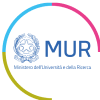Study Extent: The dataset contains information on 428 occurrences for 55 taxa. The occurrences were recorded during the years 2019-2022. The study area is 212.5 km^2.
Sampling: For each sampling station, sediment samples were collected using a spatula. Aliquots of sediment were collected in plastic jars and kept at controlled temperatures between 4 and 7 °C to preserve live animals. Sediment samples were then sorted at the stereomicroscope (Leica M125, 80x magnification) to isolate chironomid larvae and oligochaetes. Single animals were isolated: each animal was cut in two pieces, one piece to be used for morphological identification and one piece for DNA extraction (Zaupa et al., 2022). Species identification was performed by preparing Faure slides mounts of head for chironomid larvae and front end with chaetae distribution and genital apparatus for oligochaetes (Andersen et al., 2013; Timm, 2009). DNA extraction was performed, using PureLink® Genomic DNAKit (Invitrogen by Life Technologies, Thermo Fisher Scientific, Monza (MB), Italy), following manufacturer's instructions, for chironomid larvae; for oligochaetes, 40 µl of Chelex (BioRad, Segrate (MI), Italy) + 1 µl Proteinase K (PanReac AppliChem, Monza (MB), Italy. DNA was amplified with PCR to obtain the barcoding Folmer fragment of the cytochrome c oxidase subunit I (COI), with primers HCO2198 and LCO1490 (Folmer et al., 1994; Hebert et al., 2003).
Quality Control: All sequences were checked in GenBank.
Method Steps: Sediment samples were sorted at the stereomicroscope and single animals were cut in two pieces, one piece to be used for morphological identification and one piece for DNA extraction. Identification was performed to species level whenever possible, using relevant taxonomic keys (e.g. Andersen et al., 2013; Timm, 2009). DNA was amplified with PCR to obtain the barcoding Folmer fragment of the cytochrome c oxidase subunit I (COI), with primers HCO2198 and LCO1490 (Folmer et al., 1994; Hebert et al., 2003). Amplicons were sequenced (Sanger sequensing) at Macrogen Europe (Amsterdam (BA), The Netherlands;
https://www.macrogen-europe.com/); chromatograms were checked in FinchTV 1.5.0 (
https://digitalworldbiology.com/FinchTV), with forward and reverse sequences merged using Mesquite 3.6 (
https://www.mesquiteproject.org/). Sequences were aligned with MAFFT 7 (Katoh et al., 2013). All sequences were checked in GenBank through Blast searches to check their identity at the high taxonomic level and confirm that they indeed were from chironomids and oligochaetes. Then, we reported the best hits in GenBank, saving their accession numbers, species names, and geographic origin. We then followed the accepted threshold of 3% as a cutoff value for DNA barcoding in COI in invertebrates (Hebert et al., 2003) to confirm species identity. For species where a molecular match was found, the dataset includes the identified species and Genbak accession number.








